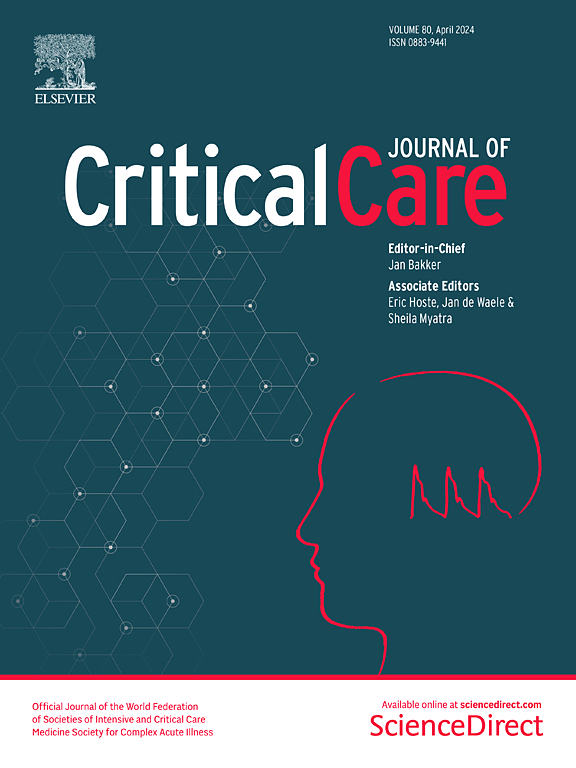Prognosis of liver abscess in the intensive care unit (POLAIR), a multicentre observational study
IF 8.8
1区 医学
Q1 CRITICAL CARE MEDICINE
引用次数: 0
Abstract
Liver abscess (LA) is a rare but potentially serious condition with a high mortality rate. Current epidemiological data of LA patients requiring intensive care unit (ICU) admission are limited. This multicentre retrospective study included adults admitted to 24 ICUs in France between January 2010 and December 2020. Risk factors for mortality were identified by multivariate analysis. A propensity score was used to adjust for confounders related to the presence of portal vein thrombosis. 335 patients were enrolled. The median age was 66 years [53–73] and 68% were male. Commons comorbidities included diabetes (29.9%) and cancer or haematological disease. Septic shock was the main reason for admission (58%). The median SAPS2 score at ICU admission was 42 [31–53] and the SOFA score was 6 [3–9]. The putative origin of LA was biliary (31%), while 40% were cryptogenic. Most patients (60%) had a solitary LA, involving the right lobe (38.8%), with a median diameter of 67 mm [47–91]. Associated portal vein thrombosis (PVT) was present in 13.4% of cases. Microbiological documentation was obtained in 82% of patients, showing gram-negative bacilli (59.7%), mainly Escherichia coli (19.6%) and Klebsiella spp. (19.1%), and gram-positive cocci (29.6%), mainly Streptococcus spp. (17.1%). Drainage was performed in 62% of cases, 40% within 48 h. The median duration of antibiotic therapy was 35 days [21–42]. During hospitalisation, 62% of patients required vasopressors and 29% required mechanical ventilation. In-ICU mortality was 11.6%. Multivariate analysis showed that organ dysfunction illustrated by SOFA score (HR 3.45 [1.95–6.09], p < 0.001) and PVT (HR 3.14 [1.54–6.39], p = 0.001) were significant risk factors for mortality. Drainage was not associated with improved short-term survival (HR 1.22 [0.65–2.72], p = 0.52). In the population matched for PVT confounders, a higher sofa score was the only factor associated with mortality (HR 3.11 [1.76–5.49] IC95%, p = 0.001). This multicentre study illustrates the severity of LA in French intensive care units and identifies organ dysfunction (SOFA score) and portal vein thrombosis as major risk factors for mortality. Prospective studies are needed to improve management strategies, as the survival benefit of drainage is unclear.求助全文
约1分钟内获得全文
求助全文
来源期刊

Critical Care
医学-危重病医学
CiteScore
20.60
自引率
3.30%
发文量
348
审稿时长
1.5 months
期刊介绍:
Critical Care is an esteemed international medical journal that undergoes a rigorous peer-review process to maintain its high quality standards. Its primary objective is to enhance the healthcare services offered to critically ill patients. To achieve this, the journal focuses on gathering, exchanging, disseminating, and endorsing evidence-based information that is highly relevant to intensivists. By doing so, Critical Care seeks to provide a thorough and inclusive examination of the intensive care field.
 求助内容:
求助内容: 应助结果提醒方式:
应助结果提醒方式:


